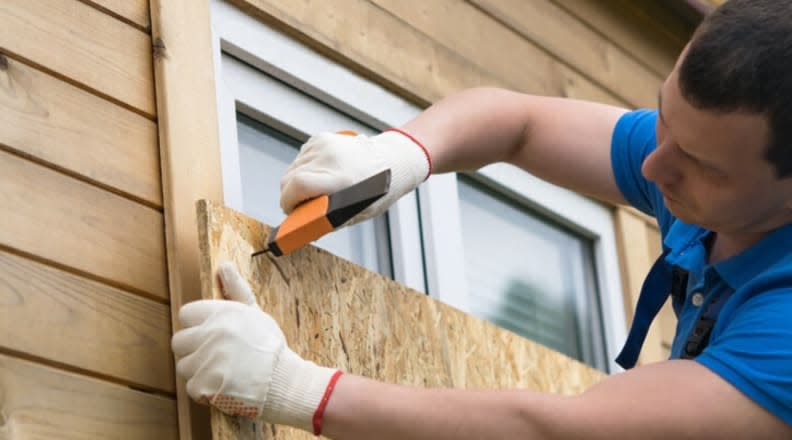What you need to prepare your home during an emergency evacuation—and how

— Recommendations are independently chosen by Reviewed’s editors. Purchases you make through our links may earn us a commission.
Severe storms, wildfires, flooding, nearby industrial accidents—there are a variety of events that can lead to a voluntary or mandatory evacuation of your home. Evacuations can often feel sudden and stressful, which is why preparing beforehand is key. You not only need to gather everything you need to leave your home, but you also need to secure your home for your departure. Doing so can give it its best chance to brace the impact of whatever natural disaster or emergency situation you may be facing. If you're not sure where to start, here's what to do to prep your home before you evacuate.
Get expert shopping advice delivered to your phone. Sign up for text message alerts from the deal-hunting nerds at Reviewed.
Clean up your yard well beforehand

In preparation of storms like tornadoes or hurricanes, already damaged or weak limbs in your yard can become possible projectiles. Ready.gov recommends trimming trees and shrubs before a storm hits.
You can use a lopper for making precise cuts on tree limbs, as well as a pole saw for tall, hard-to-reach pieces. Practice caution while trimming your trees if you’re not experienced, especially when pruning larger trees. Consider calling an arborist if the job is too extensive or dangerous.
Don't wait until the last minute to trim your trees—if you have a few days to prepare, that's plenty of time to clean up your yard. If you only have a few hours' notice, focus on ensuring you and your family are safe and secure.
Bring outdoor belongings inside
If time permits before an evacuation, be sure to bring in all loose outdoor items to keep them secure while you're gone from the home.
Bring in any patio furniture, bikes, potted plants, garbage cans and any other outdoor objects you don't want to lose or to become projectiles. You can store them in a shed, garage, basement or inside your home if you're strapped for space.
Cover windows and doors with storm shutters
If you're prepping for a serious storm, you should try to board up your windows and doors with some form of protection—even if you're leaving your home. While there are plenty of options out there for storm shutters or "hurricane shutters", many simply use sturdy plywood that can be secured over glass windows and doors to protect the home.
You may also want to consider investing in permanent, retractable storm shutters which can be opened and closed in a moment's notice. This may help to minimize damage inside the home and can keep you protected if end up staying rather than evacuating.
Elevate furniture and other valuables

If you're evacuating from a situation where local flooding is possible, you'll want to ensure the belongings you leave behind have the best chance at making it with little to no damage. While it isn't necessarily possible in extreme cases, in many situations moving items like furniture and valuables can help to potentially save those items from costly water damage. FEMA recommends moving these items up to the highest floor of your home or an attic if possible.
Turn off electricity and water
Before leaving the home, FEMA recommends unplugging all the appliances around your home, then turning off your home's electricity and main water valve if possible.
In many homes, the shut-off valve for water will be located in the basement or outside beneath a water meter grate. If you don't have a water key to access the shut-off valve, you can grab one from a local hardware store if time permits or you can try using pliers or a screwdriver.
Need help finding products? Sign up for our weekly newsletter. It’s free and you can unsubscribe at any time.
The product experts at Reviewed have all your shopping needs covered. Follow Reviewed on Facebook, Twitter, Instagram, TikTok or Flipboard for the latest deals, product reviews and more.
Prices were accurate at the time this article was published but may change over time.
This article originally appeared on Reviewed: Emergency evacuation: How to prepare your house for evacuation

 Yahoo Movies
Yahoo Movies 
